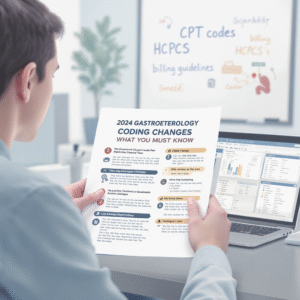Reducing Administrative Burden for Physicians: Reclaiming Time for Patient Care
Administrative Burden for Physicians
Administrative Burden for Physicians
Healthcare systemsicianss worldwide face a mounting crisis that extends far beyond patient waiting rooms and hospital corridors. At the heart of this crisis lies a problem that affects the very professionals we depend on most: the overwhelming administrative burden crushing physicians under mountains of paperwork, documentation requirements, and bureaucratic processes. This burden has reached such proportions that it threatens not only physician wellbeing but the fundamental quality of patient care itself.

The statistics paint a sobering picture. Studies consistently show that physicians spend more time on administrative tasks than they do with patients, with some research indicating that for every hour of direct patient care, doctors spend nearly two hours on administrative work. This imbalance represents a fundamental misallocation of one of our most valuable resources – the expertise and time of trained medical professionals.
The Scope of the Problem
The administrative burden on physicians has grown exponentially over the past two decades, driven by increasingly complex regulatory requirements, insurance authorization processes, and documentation standards. What was once a profession focused primarily on diagnosis, treatment, and patient interaction has transformed into one where physicians find themselves drowning in paperwork, prior authorization requests, quality reporting metrics, and electronic health record (EHR) maintenance.
This burden manifests in numerous ways throughout a typical physician’s day. Morning routines that once began with patient rounds now start with reviewing overnight messages, insurance denials, and regulatory updates. Between patient appointments, doctors rush to complete documentation requirements, respond to pharmacy requests, and handle insurance communications. Evenings that should be spent with family or in rest are instead devoted to “pajama time” – the hours physicians spend at home completing medical records and administrative tasks.

The psychological toll is substantial. Physician burnout rates have reached alarming levels, with studies showing that over half of all physicians experience symptoms of burnout, including emotional exhaustion, depersonalization, and a reduced sense of personal accomplishment. The administrative burden serves as a primary driver of this burnout, creating a sense of frustration and helplessness among healthcare providers who entered medicine to heal, not to wrestle with bureaucracy.
The Human Cost
Behind every statistic lies a human story. Physicians report feeling increasingly disconnected from the reasons they chose medicine as a career. The joy of healing, the satisfaction of solving complex medical puzzles, and the privilege of caring for patients during their most vulnerable moments – these fundamental aspects of medical practice are being overshadowed by administrative drudgery.
The impact extends beyond individual physicians to their families and personal lives. The demanding nature of administrative tasks means longer work days, weekend work, and the constant stress of knowing that undone paperwork awaits. Many physicians report that administrative burden has affected their ability to be present for their own families, creating a cascade of personal and professional dissatisfaction.
Perhaps most concerning is the effect on patient care itself. When physicians are overwhelmed by administrative tasks, they have less time and energy to devote to each patient encounter. The quality of doctor-patient relationships suffers when appointments feel rushed and physicians appear distracted by documentation requirements. Patients sense this stress and may feel less comfortable sharing important health information or asking questions about their care.
Technology: Promise and Pitfall
The introduction of electronic health records was initially hailed as a solution to many healthcare administration problems. EHRs promised to streamline documentation, improve care coordination, and reduce medical errors. While these systems have delivered on some promises, they have also created new administrative burdens that many physicians find overwhelming.
Modern EHR systems often require extensive data entry, with physicians spending significant time clicking through multiple screens to document routine patient encounters. The systems frequently lack intuitive design, requiring numerous clicks to complete simple tasks. Alert fatigue has become a real phenomenon, with physicians receiving so many automated alerts and reminders that they begin to ignore them, potentially missing truly important warnings.

However, technology also holds tremendous promise for addressing administrative burden. Artificial intelligence and machine learning applications are beginning to show real potential for automating routine tasks, improving documentation efficiency, and streamlining workflow processes. Voice recognition technology has evolved to the point where it can accurately transcribe physician notes, reducing typing time. Automated prior authorization systems are being developed to handle routine insurance requests without physician intervention.
Regulatory Reform: A Critical Component
Much of the administrative burden physicians face stems from regulatory requirements imposed by government agencies, insurance companies, and accrediting organizations. While these requirements often serve important purposes – ensuring quality care, preventing fraud, and maintaining safety standards – they have grown in complexity and volume to the point where they may be counterproductive.
The Centers for Medicare and Medicaid Services (CMS) has recognized this problem and begun implementing reforms designed to reduce administrative burden. The MyHealthEData initiative aims to improve data sharing and reduce duplicate reporting requirements. The Patients Over Paperwork initiative specifically targets administrative burden reduction, seeking to eliminate unnecessary requirements while maintaining quality and safety standards.
Insurance companies are also beginning to acknowledge their role in creating administrative burden. Some are implementing automated prior authorization systems for routine medications and procedures, reducing the need for physician intervention in straightforward cases. Others are streamlining their approval processes and providing clearer guidelines for authorization requirements.
Practical Solutions for Healthcare Organizations
Healthcare organizations can implement numerous strategies to reduce administrative burden on their physicians. One of the most effective approaches involves hiring dedicated administrative staff to handle routine tasks that don’t require medical training. Medical scribes, for example, can handle real-time documentation during patient encounters, allowing physicians to focus on patient care rather than data entry.
Workflow optimization represents another crucial area for improvement. Many healthcare organizations have discovered that simple changes in process flow can dramatically reduce administrative burden. For instance, batching similar tasks together, standardizing routine procedures, and eliminating duplicate processes can free up significant physician time.
Technology implementation must be approached thoughtfully, with physician input guiding system selection and configuration. EHR systems should be optimized for physician workflow rather than billing requirements. Voice recognition software, automated form filling, and intelligent alerts can reduce documentation time when properly implemented.
Training and support are essential components of any burden reduction strategy. Physicians need adequate training on new systems and processes, along with ongoing support to address problems quickly. Too often, healthcare organizations implement new technologies without providing sufficient training, leading to frustration and inefficiency.
The Role of Artificial Intelligence
Artificial intelligence represents perhaps the most promising frontier for administrative burden reduction. AI applications can automate routine documentation tasks, analyze patient data to suggest diagnoses and treatments, and handle routine communication with patients and other providers.
Natural language processing technology can extract relevant information from physician notes and automatically populate required fields in medical records. Machine learning algorithms can identify patterns in patient data that might indicate the need for specific interventions or follow-up care. Predictive analytics can help healthcare organizations anticipate administrative needs and allocate resources more effectively.

However, AI implementation must be approached carefully, with attention to privacy concerns, accuracy requirements, and physician acceptance. The technology should augment rather than replace physician decision-making, providing tools that make physicians more efficient rather than systems that attempt to automate medical judgment.
Policy Recommendations
Addressing administrative burden requires coordinated action at multiple levels, from individual healthcare organizations to national policy makers. Several key policy changes could significantly reduce the burden on physicians while maintaining necessary oversight and quality standards.
Regulatory streamlining should focus on eliminating duplicate reporting requirements and simplifying compliance processes. When multiple agencies require similar information, coordinated reporting systems could reduce the overall burden on healthcare providers. Regular review of existing regulations should identify requirements that no longer serve their intended purpose or that create disproportionate burden relative to their benefits.
Insurance reform could address many of the most frustrating administrative tasks physicians face. Standardizing prior authorization processes across insurance companies, implementing automated approval systems for routine medications and procedures, and reducing the frequency of authorization renewals could eliminate thousands of hours of administrative work.
Interoperability standards for health information systems could reduce the need for duplicate data entry and improve care coordination. When different systems can communicate effectively, physicians spend less time transferring information between platforms and more time focusing on patient care.
Moving Forward: A Collaborative Approach
Reducing administrative burden for physicians requires collaboration among all stakeholders in the healthcare system. Healthcare organizations, technology vendors, government agencies, and insurance companies must work together to identify and eliminate unnecessary administrative tasks while maintaining high standards of care quality and patient safety.
Physicians themselves have an important role to play in this process. They must advocate for changes that will improve their working conditions and patient care, participate in the design and implementation of new systems, and provide feedback on the effectiveness of burden reduction initiatives.
The path forward is not simple, but the stakes are too high to ignore. The administrative burden crisis threatens the sustainability of our healthcare system and the wellbeing of the physicians we depend on for our care. By working together to implement thoughtful, evidence-based solutions, we can create a healthcare system that allows physicians to focus on what they do best: caring for patients.
The investment in reducing administrative burden will pay dividends not only in physician satisfaction and retention but in improved patient care, reduced healthcare costs, and a more sustainable healthcare system for all. The time for action is now, and the solutions are within our reach if we have the will to implement them.



